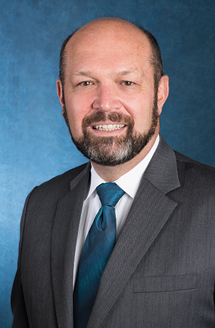July 2016—I love to read and I like to watch a good baseball game. Sometimes I can actually use one to enhance the other. No, this is not leading to a discussion on Bull Durham and how life is defined by baseball or Field of Dreams and the logic of build it and they will come. Rather, this is about us as pathologists and our interest in seeing more than is initially apparent.

During a recent Red Sox game, I pulled out my e-book version of Sherlock Holmes stories in search of “Silver Blaze,” a case that involves a murder, a fast horse, and a strangely quiet guard dog. When a local police officer asks Holmes about clues to consider, he replies, “The curious incident of the dog in the night-time.” When the constable responds that the dog had done nothing overnight, Holmes replies, “That was the curious incident.” (Holmes reasoned that only an intruder the guard dog knew well could enter the barn without raising a ruckus.)
In Sherlock Holmes, Arthur Conan Doyle gives us a character who is less intuitive than curious, observant, and patient. Much like a pathologist, Holmes methodically identifies what the evidence shows and whether all the right pieces are in place. What clues are missing? What doesn’t fit? Like the pathologist who considers another IHC assay or a molecular test when the picture doesn’t feel complete, Holmes asks about the dog that doesn’t bark. Both of us follow our gut, pay attention to butterflies in our stomach that tell us something isn’t quite right, and keep asking questions until we get the evidence we need.
The best example that comes to mind is our imminent transition to digital pathology. Whole slide imaging is a promising tool now used in our world primarily for research and teaching. As we await regulatory approval to use it for primary diagnosis, we think about the “known unknowns” regarding how this (eventually) more efficient process will affect workflow and what it will cost. We know that our workload and compensation are likely to be affected but cannot contribute the data needed for further predictions without experience. Like Holmes, we must be patient.
In the meantime, we should all be thinking about how to manage this transition, where we should go for advice, and what we can learn from the early adopters. (The CAP Digital Pathology Resource Guide is a good place to start.) It’s not too soon to figure out who in our groups will be tasked with identifying the most appropriate systems to be considered, the most reliable vendors to be evaluated, and the ballpark costs to be budgeted. Summer is a good time to brainstorm with information technology teams, find out what they will need from you, and bring those who manage budget projections into the loop. The transition is a complex undertaking that generates what may at first feel like an overwhelming number of discrete considerations, but that speaks to our skills.
Somewhere around the seventh-inning stretch, with the Red Sox safely in the lead (or so I thought), I started to think about one of my favorite books, The Physics of Baseball, by Robert K. Adair, a professor emeritus of physics at Yale and member of the National Academy of Sciences. If you’ve ever wondered whether a ball pitched or hit on a humid day travels faster or slower than one pitched or hit in better weather, this is the book to read. (Hint: All clouds float.)
I like to read math and science. Michael Shermer (The Believing Brain) and Oliver Sacks (The Mind’s Eye) have fascinating things to say about our inclination to find patterns and construct explanations for them. Much of this seems to be neurologically driven; some of it is what gives casinos their staying power.
I enjoy cultural histories, too. Siddhartha Mukherjee’s The Emperor of All Maladies: A Biography of Cancer is positively compelling. In Guns, Germs, and Steel: The Fates of Human Societies, Jared Diamond offers highly original thinking on the influence of environment and geography in taking us from hunter-gatherers to technocracies. And Patricia Friedberg (yes, my mom, who was a playwright before turning to historical fiction) has published two engaging novels. Letters from Wankie: A Place in Colonial Africa is based on the first two years of my parents’ marriage, when my father was establishing his medical practice and she was an official in the local courts. Her second novel, 21 Aldgate, brings Winston Churchill and other historical figures into sharp relief while driving home the realities of life in interwar London.
I recently read How Not to Be Wrong: The Power of Mathematical Thinking by Jordan Ellenberg, and have no quarrel with the reviewer who called it the Freakonomics of math. Lots of stories in there about seeing what’s missing. Finally, I recommend Being Mortal: Medicine and What Matters in the End by Atul Gawande, who offers hope that our better angels will enable us to create humane solutions to the challenges of illness and aging.
I intended this column to be a reflection on the value of thoughtful diversion and what our kids call “headspace.” It’s good to step back, on occasion, from the many competing demands we balance day to day. I like to think that we are all glad to reach home plate each night, that baseballs and casinos will always follow the laws of physics and math, and that much of what looks random can be explained. It’s all about the science. Whatever diversions we might select, I know we’ll continue to ask the right questions, to attend to the butterflies in our stomach, and to listen for the dog that doesn’t bark.
[hr]
Dr. Friedberg welcomes communication from CAP members. Write to him at president@cap.org.
 CAP TODAY Pathology/Laboratory Medicine/Laboratory Management
CAP TODAY Pathology/Laboratory Medicine/Laboratory Management
